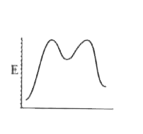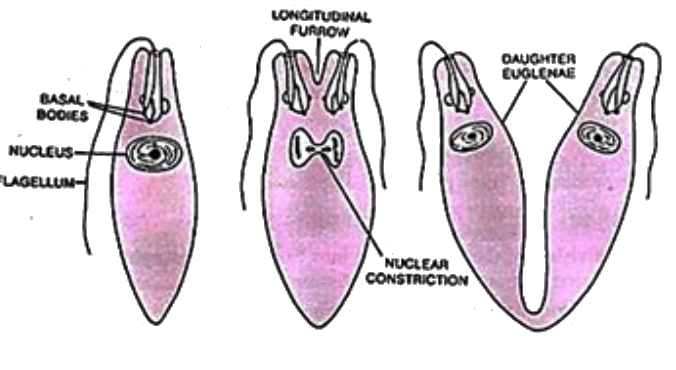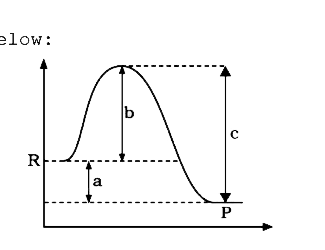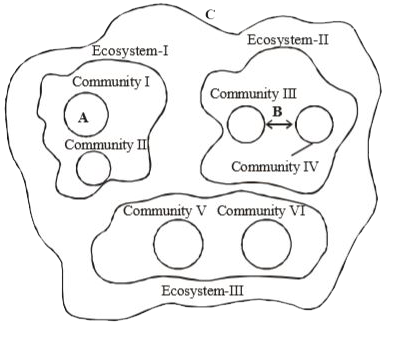Questions given below are based on the given diagram for extractive metallurgy.
(iv) At 1100∘C, which reaction is spontaneous to a maximum extent ?
MgO+C→Mg+CO
ZnO+C→Zn+CO
MgO+Zn→Mg+ZnO
ZnO+Mg→MgO+Zn
The correct Answer is:D
To determine which reaction is spontaneous to a maximum extent at 1100°C, we need to analyze the given reactions based on their Gibbs free energy (ΔG). A reaction is considered spontaneous if ΔG is negative.
1. Understand the Concept of Spontaneity:
- A reaction is spontaneous when ΔG < 0. This indicates that the reactants can convert to products without the need for external energy.
2. Analyze Each Reaction:
- We will evaluate the given options one by one to see which reaction has the most negative ΔG.
3. Option A: Magnesium Oxide and Carbon:
- The reaction involves magnesium oxide (MgO) and carbon (C) producing carbon monoxide (CO) and magnesium (Mg).
- Here, carbon is reducing magnesium oxide. However, magnesium has a more negative ΔG than carbon, meaning magnesium can reduce carbon, not the other way around. Thus, this reaction is not spontaneous.
4. Option B: Zinc Oxide and Carbon:
- This reaction involves zinc oxide (ZnO) and carbon producing zinc (Zn) and carbon monoxide (CO).
- In this case, zinc is reducing carbon monoxide. However, since zinc is less reactive than carbon, this reaction is also not spontaneous.
5. Option C: Magnesium Oxide Formation:
- This option involves magnesium oxide (MgO) and zinc (Zn) where zinc is acting as a reducing agent.
- Since magnesium is below zinc in the reactivity series, magnesium cannot reduce zinc oxide. Therefore, this reaction is not spontaneous.
6. Option D: Magnesium and Zinc Oxide:
- This reaction involves magnesium (Mg) and zinc oxide (ZnO) producing zinc (Zn) and magnesium oxide (MgO).
- Here, magnesium is reducing zinc oxide to zinc. Since magnesium has a more negative ΔG compared to zinc, this reaction is spontaneous to a maximum extent.
7. Conclusion:
- The reaction that is spontaneous to a maximum extent at 1100°C is the one where magnesium reduces zinc oxide to zinc.
Final Answer:
The reaction where magnesium reduces zinc oxide to zinc (Option D) is spontaneous to a maximum extent at 1100°C.
- A reaction is spontaneous when ΔG < 0. This indicates that the reactants can convert to products without the need for external energy.
- We will evaluate the given options one by one to see which reaction has the most negative ΔG.
- The reaction involves magnesium oxide (MgO) and carbon (C) producing carbon monoxide (CO) and magnesium (Mg).
- Here, carbon is reducing magnesium oxide. However, magnesium has a more negative ΔG than carbon, meaning magnesium can reduce carbon, not the other way around. Thus, this reaction is not spontaneous.
- This reaction involves zinc oxide (ZnO) and carbon producing zinc (Zn) and carbon monoxide (CO).
- In this case, zinc is reducing carbon monoxide. However, since zinc is less reactive than carbon, this reaction is also not spontaneous.
- This option involves magnesium oxide (MgO) and zinc (Zn) where zinc is acting as a reducing agent.
- Since magnesium is below zinc in the reactivity series, magnesium cannot reduce zinc oxide. Therefore, this reaction is not spontaneous.
- This reaction involves magnesium (Mg) and zinc oxide (ZnO) producing zinc (Zn) and magnesium oxide (MgO).
- Here, magnesium is reducing zinc oxide to zinc. Since magnesium has a more negative ΔG compared to zinc, this reaction is spontaneous to a maximum extent.
- The reaction that is spontaneous to a maximum extent at 1100°C is the one where magnesium reduces zinc oxide to zinc.
The reaction where magnesium reduces zinc oxide to zinc (Option D) is spontaneous to a maximum extent at 1100°C.
Topper's Solved these Questions
- BOOK - CENGAGE CHEMISTRY ENGLISHCHAPTER - GENERAL PRINCIPLES AND PROCESS OF ISOLATION OF ELEMENTSEXERCISE - Exs 1.1 (Subjective)25videos
GENERAL PRINCIPLES AND PROCESS OF ISOLATION OF ELEMENTS
- BOOK - CENGAGE CHEMISTRY ENGLISHCHAPTER - GENERAL PRINCIPLES AND PROCESS OF ISOLATION OF ELEMENTSEXERCISE - Exs 1.1 (Objective)14videos
GENERAL PRINCIPLES AND PROCESS OF ISOLATION OF ELEMENTS
- BOOK - CENGAGE CHEMISTRY ENGLISHCHAPTER - GENERAL PRINCIPLES AND PROCESS OF ISOLATION OF ELEMENTSEXERCISE - Archives (Subjective)14videos
GENERAL PRINCIPLES AND PROCESS OF ISOLATION OF ELEMENTS
- BOOK - CENGAGE CHEMISTRY ENGLISHCHAPTER - ELECTROCHEMISTRYEXERCISE - Archieves Subjective35videos
ELECTROCHEMISTRY
- BOOK - CENGAGE CHEMISTRY ENGLISHCHAPTER - GRIGNARD REAGENTS AND ORGANOMETALLIC REAGENTSEXERCISE - Exercises Archives (Linked Comprehension)1videos
GRIGNARD REAGENTS AND ORGANOMETALLIC REAGENTS
Similar Questions
Questions given below are based on the given diagram for extractive metallurgy.
(v) This method is known as :View SolutionQuestions given below are based on the given diagram for extractive metallurgy.
(iii) The make the following process spontaneous, temperature should be :
ZnO+C→Zn+CO.View Solution
Knowledge Check
- Question 1 - Select One
Which energy diagram best represents the given reaction ?
 A
A B
B C
C D
D
Questions given below are based on the given diagram for extractive metallurgy.
(i) At what approximate temperature, zinc and carbon have equal affinity for oxygen ?View SolutionFree enegry , G=H−TS, is state function that indicates whther a reaction is spontaneous or non-spontaneous. If you think of TS as the part of the system's enegry that is disordered already, then (H−TS) is the part of the system's energy that is still ordered and therefore free to cause spontaneous change by becoming disordered.
Also, ΔG=ΔH−TΔS From the second law of thermodynamics, a reaction is spontaneous if ΔtotalS is positive, non-spontaneous if ΔtotalS is negative, and at equilibrium if Δ'→talS is zero.
Since, −TΔS=ΔG and since ΔG and ΔS have opposite sings, we can restate the thermodynamic criterion for the spontaneity of a reaction carried out a constant temperature and pressure.
IF ΔG<0, the reaction is spontaneous.
If ΔG>0, the reaction is non-spontaneous.
If ΔG=0, the reaction is at equilibrium.
Read the above paragraph carefully and answer the following questions based on the above comprehension.
If an endothermic reaction is non-spontaneous at freezing point of water and becomes feasible at its boiling point, thenView SolutionThe ellingham diagram for zinc, magnesium and carbon coverting into correspondingoxides is shown below.

At 1100∘C, which reaction is spontaneous to a maximum extent ?View SolutionThe ellingham diagram for zinc, magnesium and carbon coverting into correspondingoxides is shown below.

At 1100∘C, which reaction is spontaneous to a maximum extent ?View SolutionThe given below diagram is the representation of
 View Solution
View SolutionThe potential diagram for reaction R→P is given below:
ΔH∘ of the reaction corresponds to the energy
 View Solution
View Solution
In the given diagram which diversity represent by A, B, and CView Solution
